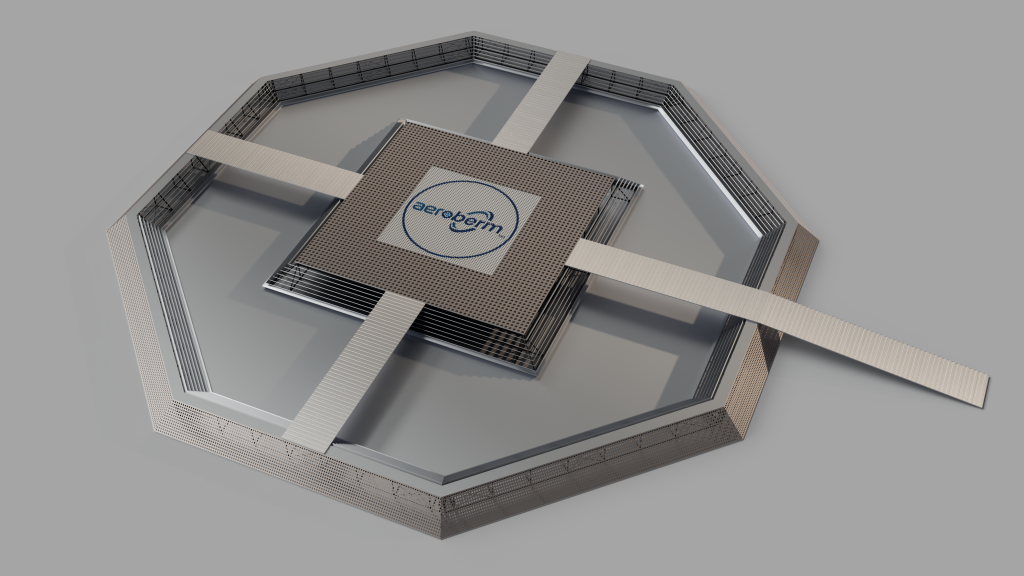Skyportz Unveils Modular Vertipad Prototype to Advance Air Mobility Infrastructure
Aeroberm™ aims to overcome downwash, fire risk and noise to support scalable eVTOL operations
Infrastructure designed for the AAM era
Australian infrastructure developer Skyportz today introduced its new vertipad prototype, the Aeroberm™, at the EVTOL Show in Palo Alto. The company described the milestone as a “major milestone in the company’s mission to create safe, scalable, and affordable infrastructure for the emerging Advanced Air Mobility (AAM) industry.”
The design stems from extensive research and development efforts with partners including Swinburne University of Technology, Sophrodyne Aerospace, Crinnac Industrial Designers and modular-construction specialist Simon McCarthy. According to Skyportz, the Aeroberm™ has progressed through computational and design testing and is now entering the fabrication phase for its first full‐scale prototype.
Addressing three critical vertiport challenges
One of the biggest barriers to deploying urban vertiports has been managing downwash/outwash effects, fire risk and noise. Skyportz says its patented Aeroberm™ platform directly tackles these three show-stopping issues.
Downwash and outwash risks are particularly relevant: the Federal Aviation Administration (FAA) highlighted that vertipads may require a wind safety zone beyond the landing surface — defined where windspeed exceeds 34.5 mph. The Aeroberm™’s elevated modular design incorporates aerodynamic management, acoustic mitigation and integrated fire suppression systems to reduce the required footprint.
As Skyportz stated: “This is the first truly scalable vertipad solution designed for global deployment,” said Clem Newton-Brown OAM, CEO of Skyportz. “With the Aeroberm™, we’re removing the last major barriers to establishing affordable, practical, safe, and community-friendly sites for air taxi operations.”
Professor Justin Leontini of Swinburne University added: “Our detailed CFD modelling has given us a framework to progress to a full-scale prototype incorporating downwash and outwash amelioration. We will now refine the vertipad’s aerodynamic and safety performance with the data we collect from real aircraft operations on this prototype”
Modular, relocatable and partner-friendly
The modular nature of the Aeroberm™ gives it flexibility. Skyportz says the vertipads can be moved between locations depending on demand. This flexibility supports fleet operators that want to quickly establish routes.
In pursuit of broad adoption, Skyportz also plans to make its intellectual property accessible: “We will be offering our IP at no charge to OEMs, vertiport test beds and air safety regulators who want to participate in our ongoing research and development programme,” said Newton-Brown.
Skyportz expects to announce the first Aeroberm™ deployment locations in the coming months. Several Australian and international partners are already engaged in site selection and design adaptation.
Further, the company noted: “The AAM industry needs a collaborative approach to spark the revolution we have all dreamed of and this starts with a multitude of low-cost destinations to service those that invest in fleets of aircraft” said Newton-Brown.
Why this matters for the AAM ecosystem
As the AAM industry advances, aircraft capabilities are growing rapidly. Yet landing infrastructure remains one of the most under-addressed pieces of the value chain. Without affordable, safe and scalable vertiports, air taxi services face delays or higher costs.
Skyportz positions itself as a facilitator of that missing piece. On its website the company says: “We are assembling the pieces of a future air taxi network. Without a landing network none of the aircraft can deliver on promises for aviation on demand.”
By addressing three major technical barriers (downwash/outwash, fire risk, noise) and pursuing a modular, relocatable design with open-access IP tools, Aeroberm™ may help unlock new route options earlier than expected.
Outlook and next steps
Skyportz plans to move into full-scale fabrication and then field trials of its first Aeroberm™ unit. Real-world data from aircraft operations will refine the model and support regulatory approval. Partners in Australia and abroad are already evaluating site adaptations.
For operators, property owners and regulators, the key benefits offered include: reduced site footprint, lower cost of infrastructure deployment, and a standardized product for fast rollout. If Aeroberm™ can validate its performance in operational settings, it could lower one of the major barriers to large-scale AAM deployment.
As the industry continues towards the time when air mobility shifts from concept to life-changing application using existing technologies converged in new ways, landing infrastructure will be a vital enabler. The Aeroberm™ prototype is a tangible step toward that moment.
About Skyportz
Skyportz is an Australian company pioneering scalable vertiport infrastructure for electric air taxis and drones. Through a network of property partners and global collaborations, the company aims to enable the transition to a cleaner, more connected transport future.

